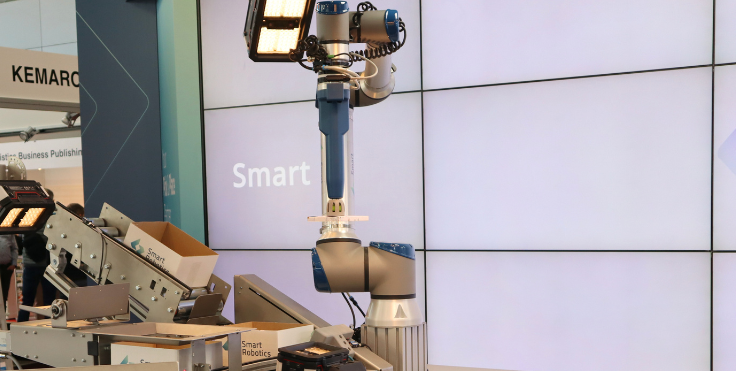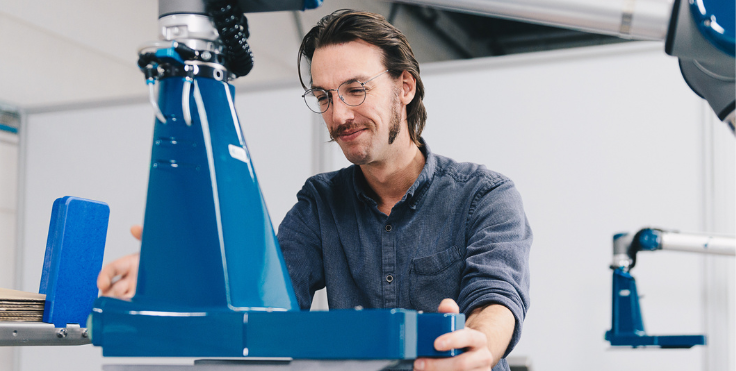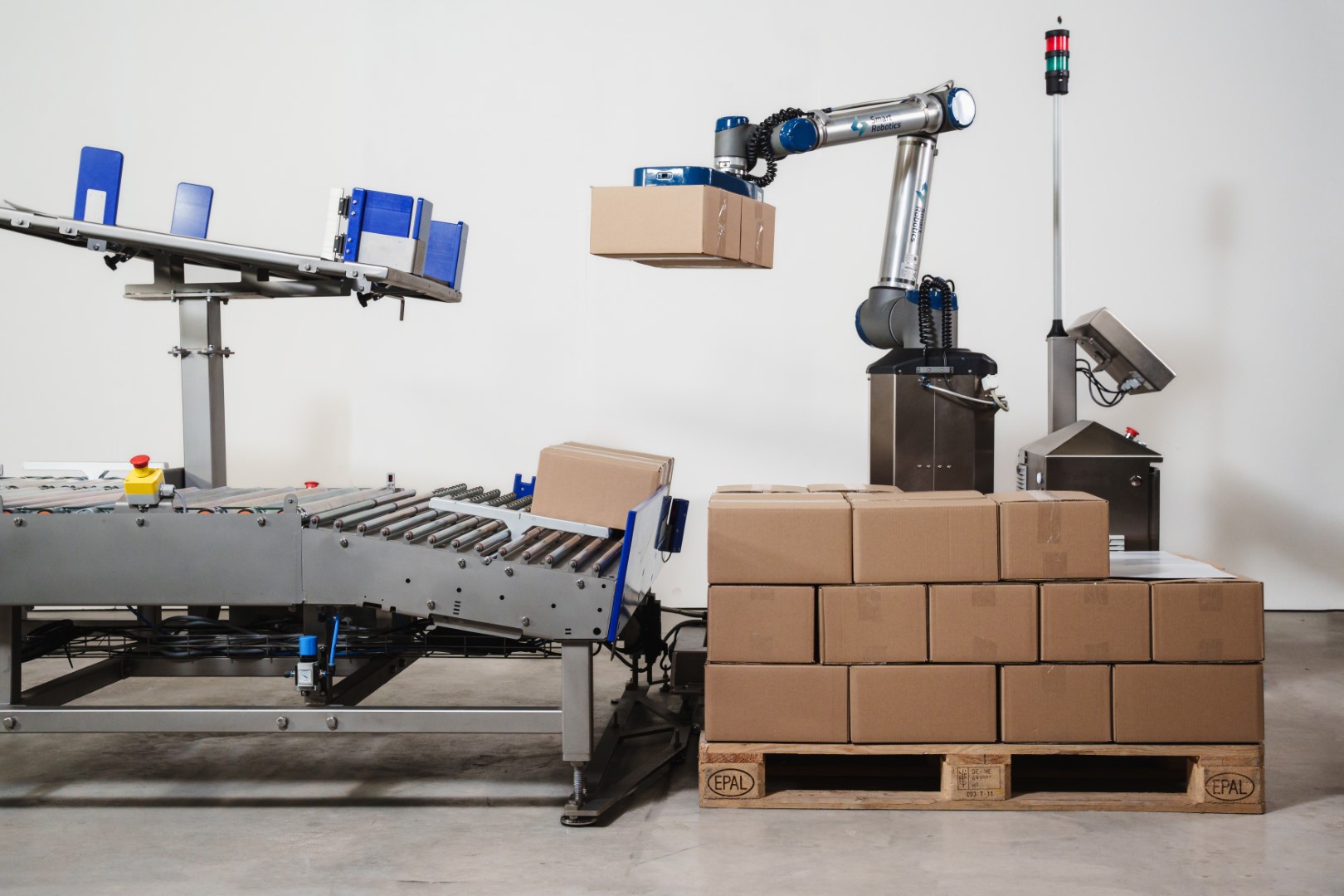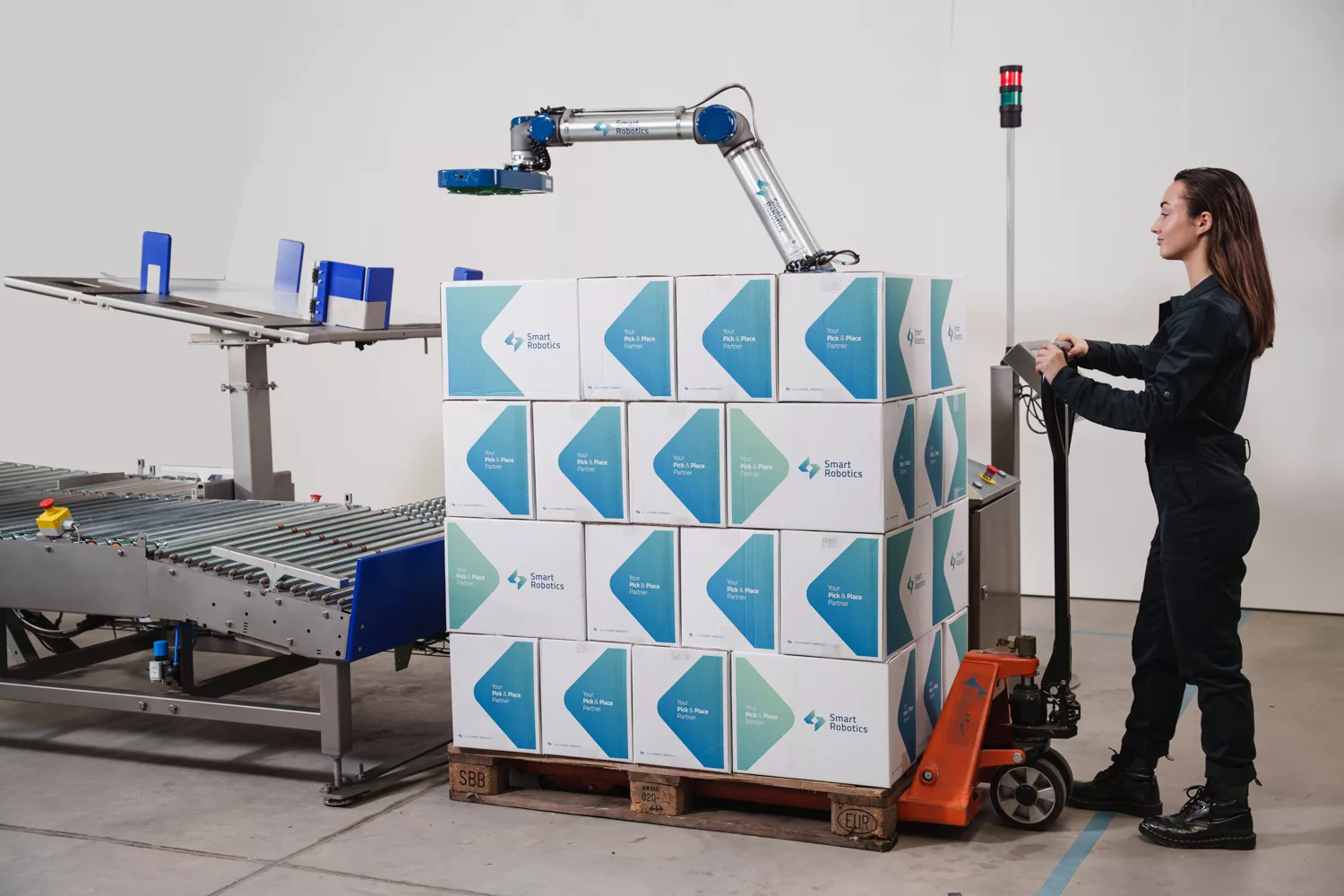Table of Content
Get in touch with our team

This site is protected by reCAPTCHA and the Google Privacy Policy and Terms of Service apply.
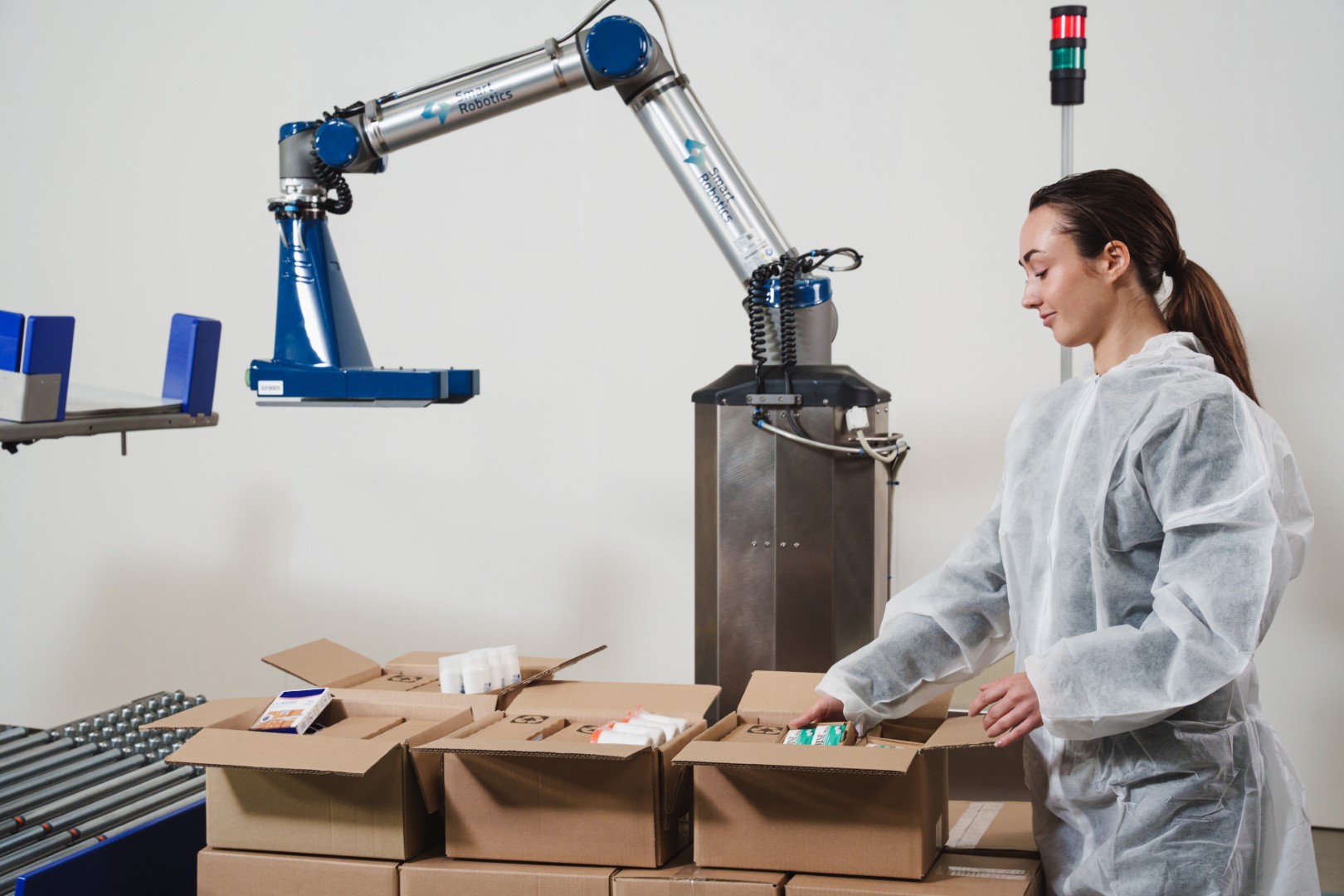
How to work safely with cobots in 2025: Complying with ISO 10218-2
Table of Content
Cobots, or collaborative robots, have been on the market for a while, working together with people without the need for a fence to secure safety. With the new 2025 ISO/TS 15066 regulations, cobots are no longer classified as a separate type of robot. Instead, they’re considered a type of robot application.
One of the great advantages of working with a cobot application is the reduced need for floor space and the ability for humans to support cobots with complex tasks. But how do we guarantee operator safety when working in close proximity to a collaborative robot without a security fence?
Guaranteeing safety with a collaborative application (cobot in short) is defined in the ISO standards, requiring that contact between human and robot shall not result in pain or injury.
In this article, we’ll dive deeper into how you, as a cobot user, can make sure that safety is properly implemented in your operations.
Enabling power and force limits for cobot safety
There are multiple ways to limit power and force, but all of them boil down to measuring the moment of impact and stopping the robot as quickly as possible in such a situation. Until the robot has stopped and is de-energized, it should not have exceeded force and power limits, as defined in the available standards. Cobots accomplish this by having a low inertia (low moving mass) and moving at limited speeds.
In addition to force and power limits, the cobot’s (and gripper’s) geometry needs to be properly designed. It must have rounded edges and no clamping possibilities near the joints.
The most common way to limit the power and force of a cobot is through measuring the force applied to the environment, derived from the motor current or torque sensors found in the robot’s joints. In other words, this method gives the robot insight into both intentional and accidental contact, including forces transmitted through the object it is holding.
For example, when picking up a 10 kg box, the robot must be informed of the weight so it can adjust its internal safety thresholds accordingly. At the same time, it must ensure that its safety functions comply with ISO 10218-2:2025 requirements, meet specific performance levels (e.g., PL d / SIL 2 for speed monitoring), and undergo proper risk assessment validation.
Quasi-static vs. transient contact with a cobot
The cobot’s safety PLC continuously monitors speed and force, but it is up to the robot integrator to ensure that the speed and force limit settings are appropriate for the specific application. To do this, the integrator must consider two types of physical contact: quasi-static and transient.
- Quasi-static contact refers to situations where a part of the body becomes trapped or clamped between the robot and another surface. These are slower, sustained contacts where the robot presses against the human body. ISO 10218-2:2025 (previously ISO/TS 15066) defines maximum permissible pressure and force for each body part in such cases. For example, the palm of a person’s hand may be subjected to a maximum pressure of 260 N/cm² and a maximum force of 140 N.
- Transient contact addresses situations in which the robot hits the operator with a short impact. These contacts are momentary and do not involve clamping. The standard also defines maximum permissible values for transient contact, which are typically twice as high as those allowed for quasi-static contact.
Analyzing cobot safety according to ISO 10218-2
There are two main ways to determine whether a robot application fulfills safety requirements:
- Empirical validation: measuring pressure and force at all critical points and scenarios using a certified tool. Many companies offer these tools along with consultancy services to perform these measurements.
- Theoretical analysis: applying formulas provided in ISO 10218-2:2025 to calculate maximum allowable speeds, torques, and forces for the specific robot configuration.
In practice, integrators often apply general design rules to ensure a safe setup. For example, using only mechanical parts with rounded corners (e.g radius ≥ 5 mm), limiting robot speed, and capping applied force, can significantly reduce the most common risks.
Note: The updated standard places greater emphasis on application-specific validation: each collaborative setup must be assessed based on its environment, use case, and the configured safety functions. Functions like monitored standstill (formerly known as safety-rated monitored stop) and reduced speed mode must meet the required performance levels.
Protecting the head while working with cobots
A difficult part in each safety analysis is possible contact with the head of an operator. The new standards still do not give practical advice on this topic. One way of dealing with this is a zero-risk policy, in which the cobot is typically fenced off to prevent contact with the head. However, this diminishes all advantages and flexibility that a cobot gives. One could then better use a standard industrial robot at higher speeds.
Hence, most integrators choose to use common sense to analyze this risk. They position the robot in such a way that contact with the head is prevented as much as possible.
A high-speed cobot solution
If you’re a cobot user looking to operate at higher speeds, it’s possible under one key condition: using safety scanners and light curtains in the cobot’s working zone.
These safety devices ensure that when an operator enters the area, the cobot is immediately alerted and slows down to a safe speed.
Cybersecurity and new functional requirements
ISO 10218-1:2025 introduces cybersecurity requirements for collaborative applications. Systems must be protected against unauthorized access, manipulation, or tampering. Every cobot setup must include emergency stops, hand detection sensors, and speed and separation monitoring systems.
These safety functions must meet defined performance levels (e.g., PL d / SIL 2), and all potential hazards must be addressed through a thorough risk assessment.
Final thoughts
Safety standards are essential for guiding cobot implementation, but common sense remains one of the most important tools at your disposal. By integrating force validation, cybersecurity, and performance-level requirements, you can ensure a compliant, safe, and flexible setup, just as ISO 10218:2025 helps enable.
Get in touch with our team

This site is protected by reCAPTCHA and the Google Privacy Policy and Terms of Service apply.
Ready for safe cooperation with a collaborative robot?
Learn all about our safe, reliable and efficient solutions for your logistics operations.
Contact usFAQs
Collaborative robots (or cobots) are designed to operate safely around people by limiting their force, speed, and movement. They typically have low inertia, rounded edges, and built-in sensors that monitor power and force. The updated ISO 10218:2025 standard ensures that cobots meet specific thresholds for safe contact and requires application-specific risk assessments to validate these safety measures.
Good cobot safety starts with thoughtful design. Some practical rules include:
- Use rounded corners (≥ 5 mm radius) and avoid sharp edges.
- Use safety scanners or mats to detect nearby operators and reduce speed when needed.
- Ensure the robot knows the weight of what it’s holding, so it can take this weight into account for its safety calculations.
- Communicate, provide training, and perform risk assessments for your employees.
As a rule of thumb, robots must not cause pain or injury to anyone during operation.
Cobots should avoid contact with operators whenever possible. However, if contact does occur, it must not result in pain or injury. This can be achieved by:
- Properly using power and force limiting features
- Ensuring the impact on human body parts remains within acceptable limits
These safety functions must meet strict performance levels and be supported by thorough risk assessments, as outlined in ISO 10218:2025.
Operators need to feel confident working alongside a cobot. A well-designed safety system allows people and robots to collaborate effectively without compromising performance. In other words, safety isn’t just about blind compliance; it’s about employees’ peace of mind on the job.
